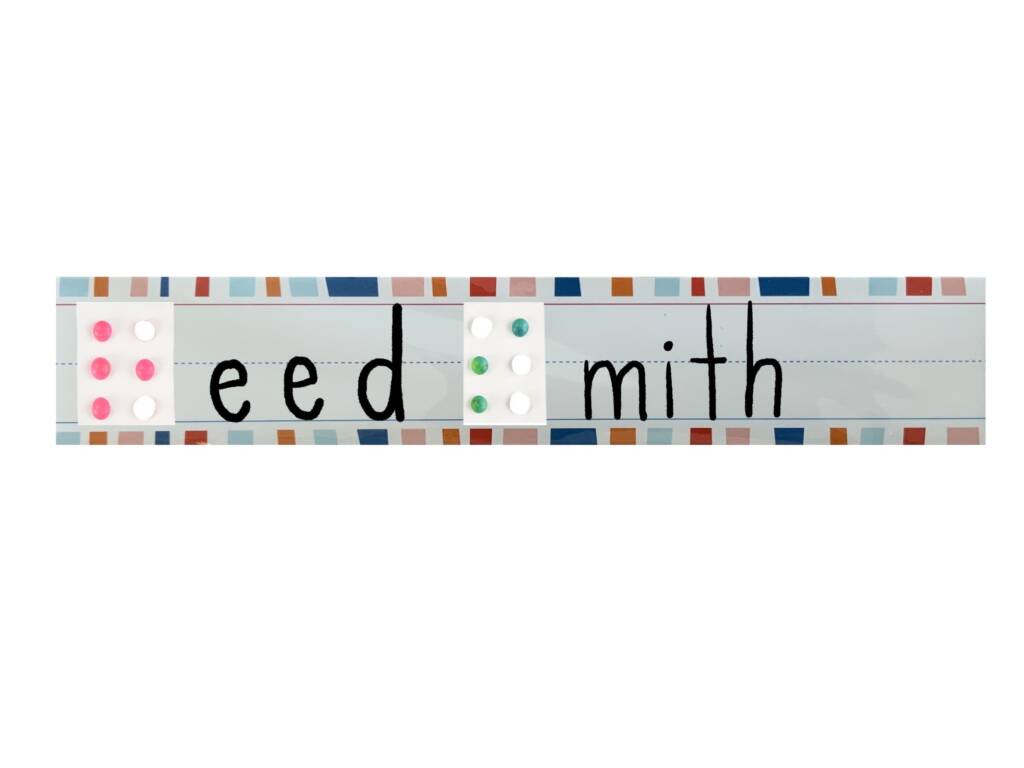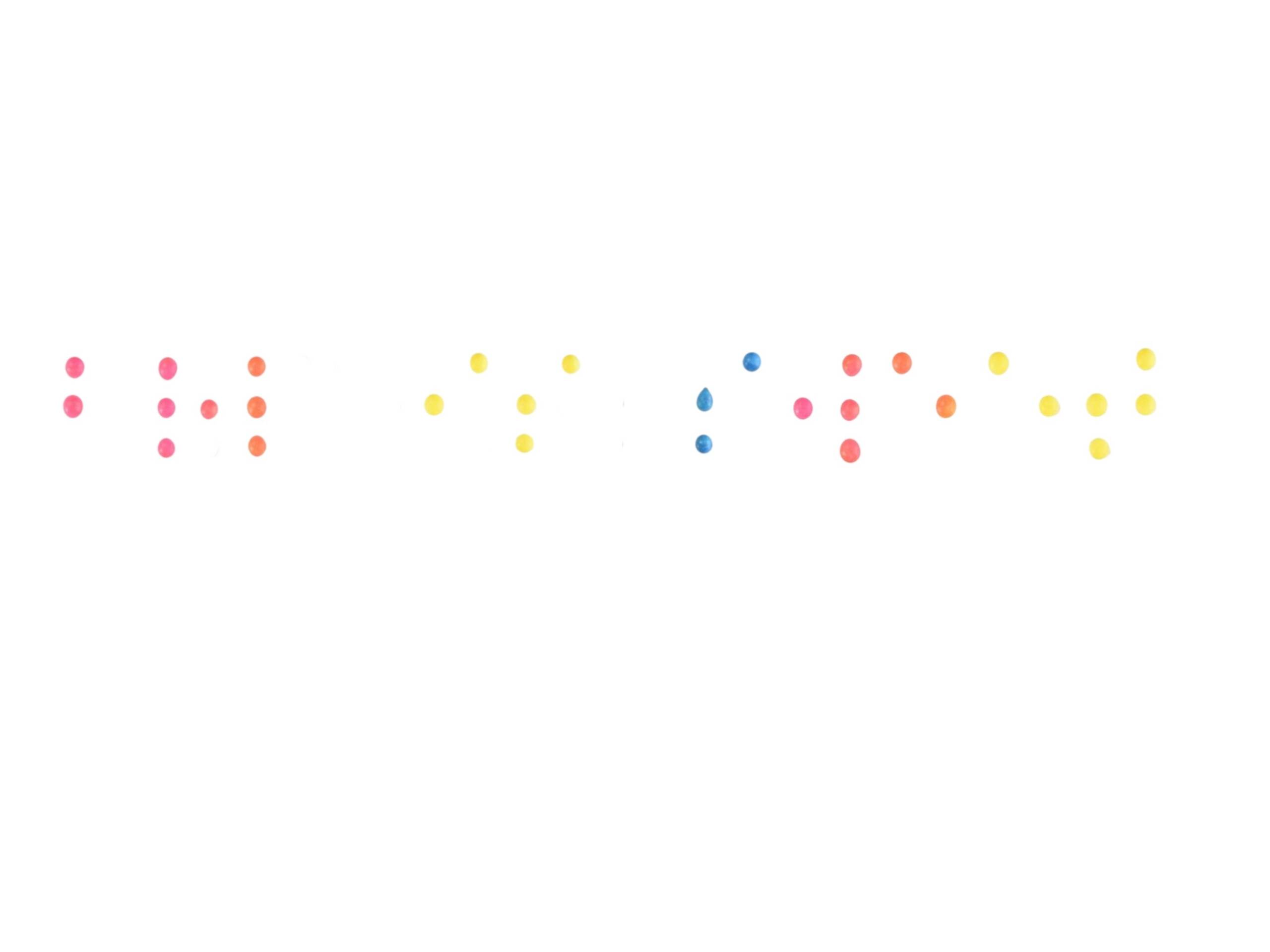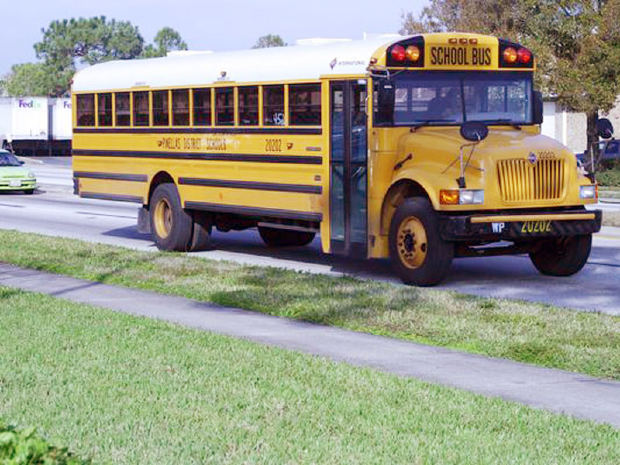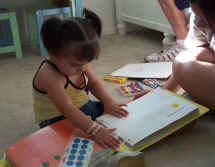Learning your letters can be hard. Well, why not make it a little sweeter! Teachers of the Visually Impaired (TVI) are always collaborating with classroom teachers on how to include our braille reading students into the class. In kindergarten, students are learning phonics, reading, spelling and letter identification, to name a few. Our braille readers are doing the same!
It is important for their peers and fellow classmates to work alongside them and understand that there are different ways to learn the alphabet. A fun and easy way to get all the students involved and engaged is having them participate in a fun interactive activity that helps them gain an understanding of the braille alphabet. The class will create name strips with both the first and last initial of their names, using candy dots (also called candy buttons). Cut into a “full cell” of braille or six dots, this is a fun and tasty way to get students into braille! Have your students take this home to help facilitate further conversation about braille and different ways of learning!
Lesson plan: braille is sweet!
Topic: Pre-Braille Class Activity
Lesson Objectives
The goal of this lesson is to integrate the general education classroom with a student who is blind or visually impaired. Students at the kindergarten level are recognizing and identifying letters in their name, just as your braille student is doing. This activity is geared to engage the general education classroom in the awareness of the Braille code and how their classmate is learning his/her letters.
Students will explore the braille code, be introduced to the layout of the braille cell and collaborate with peers to ultimately create their first initial and last initial in braille using candy dots! A fun interactive activity that each student could bring home to facilitate further conversation.
Differentiated instruction
This is an activity that incorporates tactile, visual and olfactory senses. This activity is inclusive and can engage a variety of learners.
Prerequisite skills and/or concepts
- Fine motor skills to peel off the candy dot and to use a pincer grasp to place the dot on their paper (can scaffold this skill as needed for individual students)
- Understanding the orientation of the 6 dot braille cell
- Letter identification
- Identifying the first and last initial of their names
- Letter sounds
Pre-braille skills
- Orientation to the swing cell
- Identification of the braille dots (1-6)
- Pre-reading readiness skills of letter ID
- Letter creation with dot placement
- Dot placement identification of their first and last initial
IEP goals/objectives addressed in this lesson
If you have a braille reader that is working with their class on this activity, you can use this as an opportunity for them to correctly identify the correct dot placement for each letter of their name or work on another pertaining braille goal.
Accommodations/Adaptations listed in IEP
- Students can have a print copy of the braille alphabet at their seat
- Braille alphabet can be provided for your visually impaired student
Curriculum frameworks/common core standards addressed
Demonstrate command of the conventions of standard English grammar and usage when writing or speaking.
Print many upper and lowercase letters.
Technology and materials used during lesson
- Swing cell
- Glue
- Candy dots
- Lined writing paper strip
- Sharpie marker
- Dot markers
- Projected braille alphabet on Smart board, etc.
- Printed blank full cell
Instructional procedures
- Display the braille alphabet on the board with the corresponding
print letters - Pass out materials to each student (paper strip, glue sticks, two full
cells of candy dots, printed copy of the braille alphabet with
corresponding print letters) - Have each student identify the first letter of their name
- Once identified have them locate the print letter on their braille
alphabet chart - Then have the students take their dot markers and stamp on the
large empty braille cell which dots make up the first letter in their
name, for example, the letter “R”
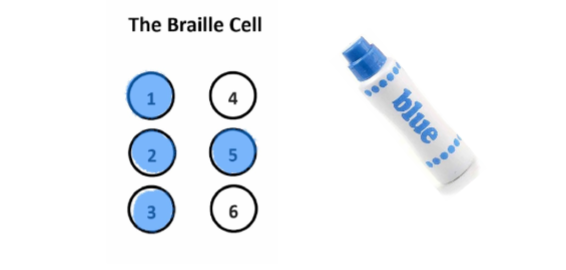
- After they stamp out the dots that make up their letter, have them
take out their full cell of candy dots - Have the students peel off the dots that are not colored in or copy
the dot marker cell they created
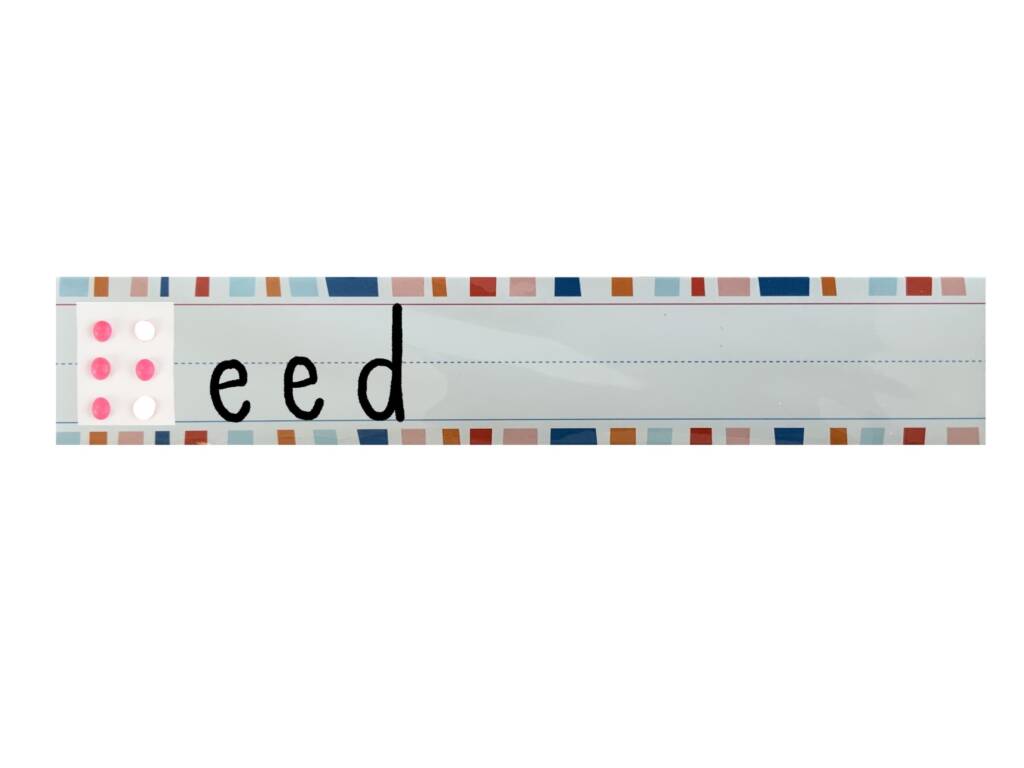
- Repeat for the last initial
- Eat your extra candy braille dots!
